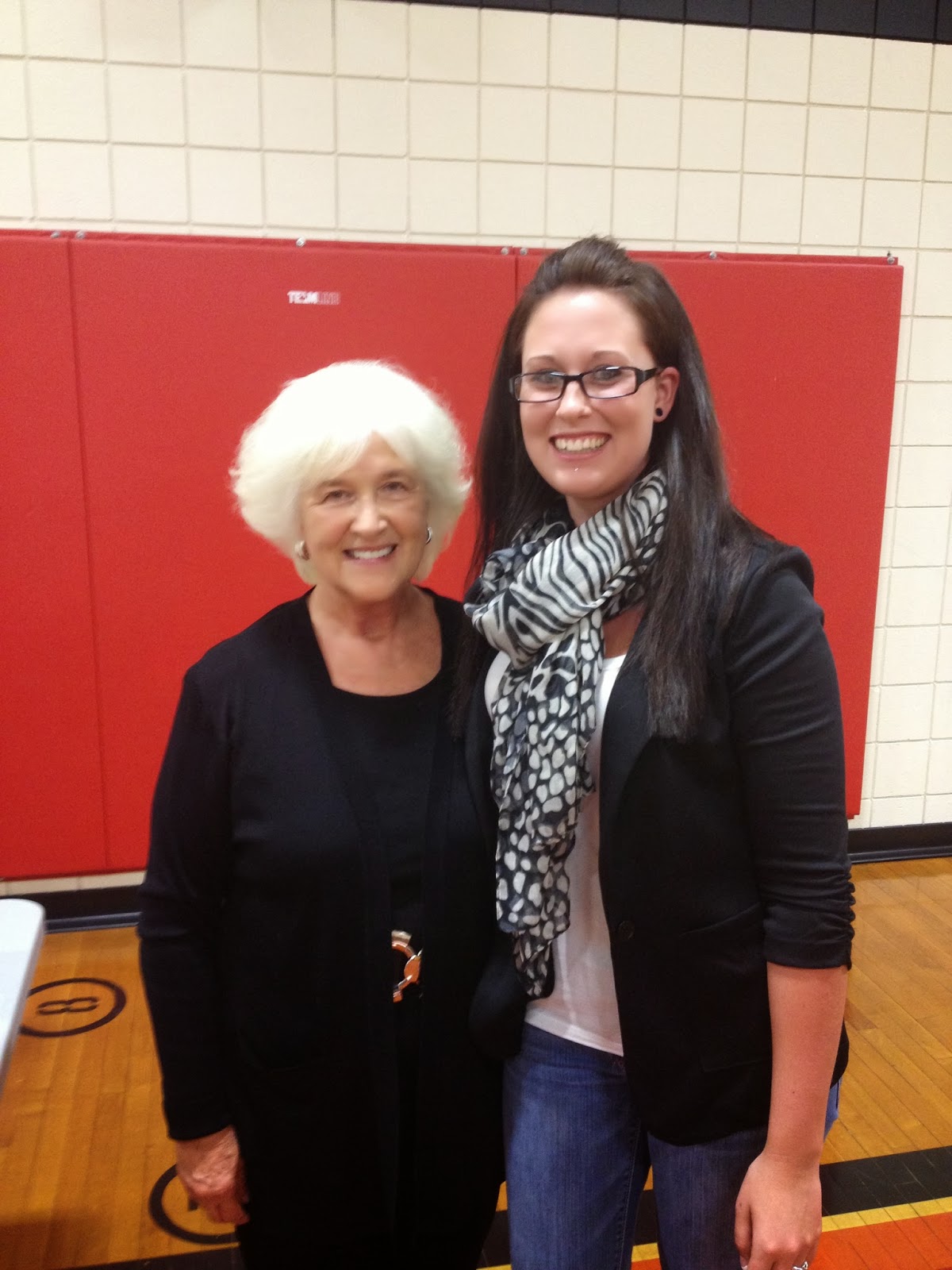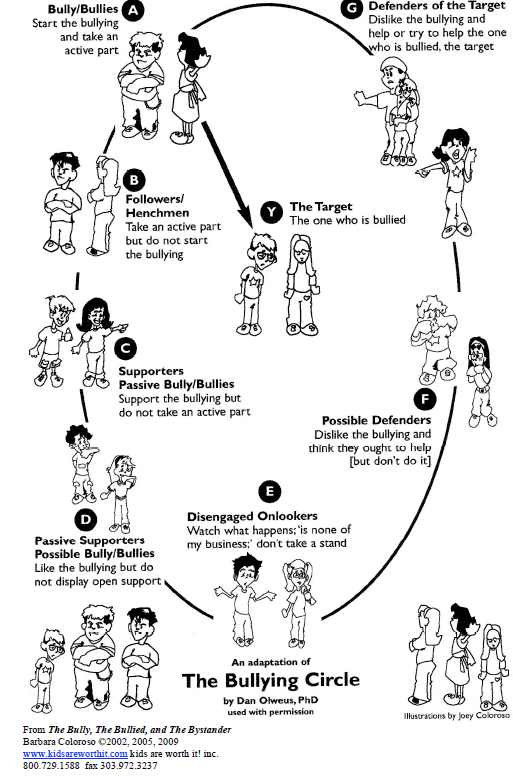Barbara Coloroso: Kids Are Worth It

Today was our first day back at school full-time for teachers! Although students don’t officially start until Thursday, teachers are back attending meetings for today and tomorrow. Today all of the teachers and support staff in “T-Division” had the opportunity to attend an PD session with Barbara Coloroso, an educator, mother, and author. To be honest, I was a little apprehensive about this session going into it because I couldn’t find a very strong online presence for Barbara and I wasn’t exactly sure what specific topics our session was going to address. I must admit, however, that I was pleasantly surprised! Not only did Mrs. Coloroso’s talk provide hordes of practical information but it was also engaging and humourous. I love a presenter who can tell a good story and work humour into their information, and she did just that!
 |
| Barbara and myself, following her presentation! |
If you visit Mrs. Coloroso’s website, you will see that she offers 7 different lectures for public presentation and I think we must have had a mixture of a few of these today. Through our 5 hour presentation, the primary focus of our discussion was on:
– Positive School Climate
– Bribes & Rewards
– The Bully, The Bullied, and Those Not So Innocent Bystanders
– Discipline
– Restorative Justice
While it is hard to effectively cover everything that was covered in Mrs. Coloroso’s presentation, here are two of the main topics I took away from it.
The Bully, The Bullied, and Those Not So Innocent Bystanders
The high school that I went to had about 600 students (which is a big school compared to others in rural Manitoba). I did experience bullying as a student and I did see teachers and administration let bullying issues fall through the cracks. (That’s an issue for another blog post.) The nice thing about “S-School” is that our high school only has around 80 students. Now I would never suggest that this means that bullying doesn’t exist, but as educators I think it is a lot easier to see the signs and notice issues when there is only 80 students compared to 600 (or 6000)!
Barbara has actually written an entire book on bullying and I found her discussion on the topic not only informative but practical and proactive. I’ve been to many discussions on bullying where I, as an audience member, was flooding with statistics and horror stories of extreme bullying, but wasn’t left with a lot of strategies to utilize. Barbara, on the other hand, discussed this topic from the perspective of:
– How to identify bullying
– The different bullying roles and,
– The Do’s & Don’ts of what to do
First of all, Barbara discussed how many teachers will use conflict resolution strategies with bullying situations and deal with the situation in the same way they would deal with their children fighting over a toy at home. “You two can either share this ball, both leave it alone, or you can come up with an agreement that works for you both.” The main problem with this being that a bullying situation is not the same as a conflict situation. Conflict is two or more parties that are in disagreement over some type of scenario. Bullying, however, is a situation where one party purposefully means to cause harm to the other person, whether that harm is verbal, physical, or relational. Here are some notes that I took down:
General Ways That Bullying Takes Place
1 ) As a 1-time event where someone is mean to another person
purposefully (verbal, physical, or relational)
2 ) As a continuous event (which also includes harassment)
3 ) As part of a hazing situation (involved with athletics, clubs, etc)
4 ) Through a digital medium (cyber-bullying)
Means of Bullying
1 ) Verbal: usually the first step in bullying
2 ) Physical
3 ) Relational: exclusion from social groups, “shunning”
* All 3 of these affect people psychologically
Roles of Bullies
1 ) The Instigator
– “Plants The Seed” in other student’s minds
2 ) The Planner
– Determines how the bullying is going to happen
3 ) The Perpetrator
– Actually carries out the bullying behavior
– Often the one most-easily caught
One of the language choices that I liked was her use of the term, “Target” to identify those students who had been bullied. I often hear of these students be referred to as, “victims” and Barbara pointed out that this can often lead to students feeling ashamed because “victims must have had something awful happen to them”. The term target comes from the fact that someone is aiming in at you, they are the one with the negativity, not you. Here is an image from one of Barbara’s handouts, available here, illustrating The Bullying Circle and all of the people that are involved in bullying scenarios. What letter would you want your students to be part of?
 |
| Bully Handout: The Bullying Circle. (Accessed 2013). Uploaded to Kids Are Worth It by Barbara Coloroso. Available online at: http://www.kidsareworthit.com/uploads/BullyHandout.pdf |
After she had provided us with the information on how to identify bullying (at all different levels), we were provided with some very basic Dos and Don’ts in regards to dealing with bullying situations.
What NOT To Do
1 ) Do not minimalize the situation
– If a student has identified that you are a safe person to confide in,
prove them right and let them know you are listening.
2 ) Do not rush into solve the problem quickly
– Bullying situations often have many underlying issues and details
that need to be understood and addressed
– Bullying is not something that can be stopped over a lunch hour
3 ) Do not tell the student to avoid the bully or ignore the situation
– A bully knows how to get to their target, simply avoiding a person at
lunch hour will not stop a bullying situation
4 ) Do not tell them to fight back
– Bullying is not a fight between two people
– Aggression fuels aggression
5 ) Do not confront a bully or their parent/guardian alone
– It is best to always have another person with you in any type of
bullying situation to act as a witness
What TO Do
1 ) Make sure the student knows that you hear and understand their concern
2 ) Make sure the student knows that you believe what they are telling you
3 ) Make sure the student knows that it is not their fault
4 ) Make sure the student knows that there are things that can be done
5 ) Make sure the student knows that you are someone safe to talk to
Discipline
Although our discussion on bullying was woven throughout the entire presentation, the last main focus of Barbara’s lecture was on discipline vs. punishment. She points out that punishment is often a “one-size-fits-all” and more often than not ignore the intent. She shared the story of a school that had a strict no-cellphone-policy in place… but also had a student population that had 33% of students with parents who were deployed in Afghanistan. While deployed, parents did not have the luxury of phoning often and, when a Grade 11 student felt his phone vibrating, he stepped out of class to answer his mother’s call. A teacher quickly came over to address his violation of the policy and, even after the student explained the situation, he was given a 5-day suspension. This punishment clearly did not take into account the student’s intent and, frankly, showed that they don’t care about their students.
Discipline, on the other hand, should be:
1 ) Constructive
2 ) Place ownership on the student
3 ) Provide ways to solve the situation so it doesn’t happen again
4 ) Keeps the student’s dignity in tact
Barbara effectively summarized this by stating that students need to, “own it, fix it, learn from it, and move on!”
When discussing how discipline looks in her classroom, Barbara shared her use of the, “3 Rs: restitution, resolution, reconciliation.” While many schools actively practice restitution (own it, fix it) and resolution (learn from it), most do not factor in reconciliation. It is important that we identify that students need to “heal with those that they harmed” and recognize that their behavior hurt another human being. Now, the important aspect of this is that reconciliation needs to be on the target’s terms, not the bullies. There will be instances where a target may never feel truly comfortable with that individual and that is up for them to identify, but make sure that you offer the option and identify to the bully that reconciliation is important.
Another thing that I really liked was that Barbara had a practice of notifying home every single time an incident occurred in her classroom (she didn’t wait until it got to an extreme). She pointed out that, if you were a parent, you would want to know if you child was called a “*****” in class today by another student. It is better for parents to be aware rather than have the student internalize the problem and not share it openly. She also pointed out that, if you were a parent, you would want to know if your student had called another student a “****” in class.
While contacting parents is not a new concept (I’m very comfortable calling parents), I really connected with Barbara’s choice of language. When talking with a student who had been targeted, she would ask students, “would you like to be able to talk to your parents first before I contact them?” or “how long do you need to tell them?” When talking with a student who had been bullying, she would ask them when their parents/guardians got home and would then add on an hour. For example, “you have until 7 tonight to tell your parents first” as it provided the students with an opportunity to own up to their behavior and open communication between parent/guardian and child before the teacher called home.
My personal reflection is only a tiny bit of information that was covered in today’s presentation. To learn more about Barbara Coloroso, and her work with teachers and parents, please explore the following links:
– Kids Are Worth It Website
– Barbara Coloroso Presentation Handouts
– Kids Are Worth It Twitter Account